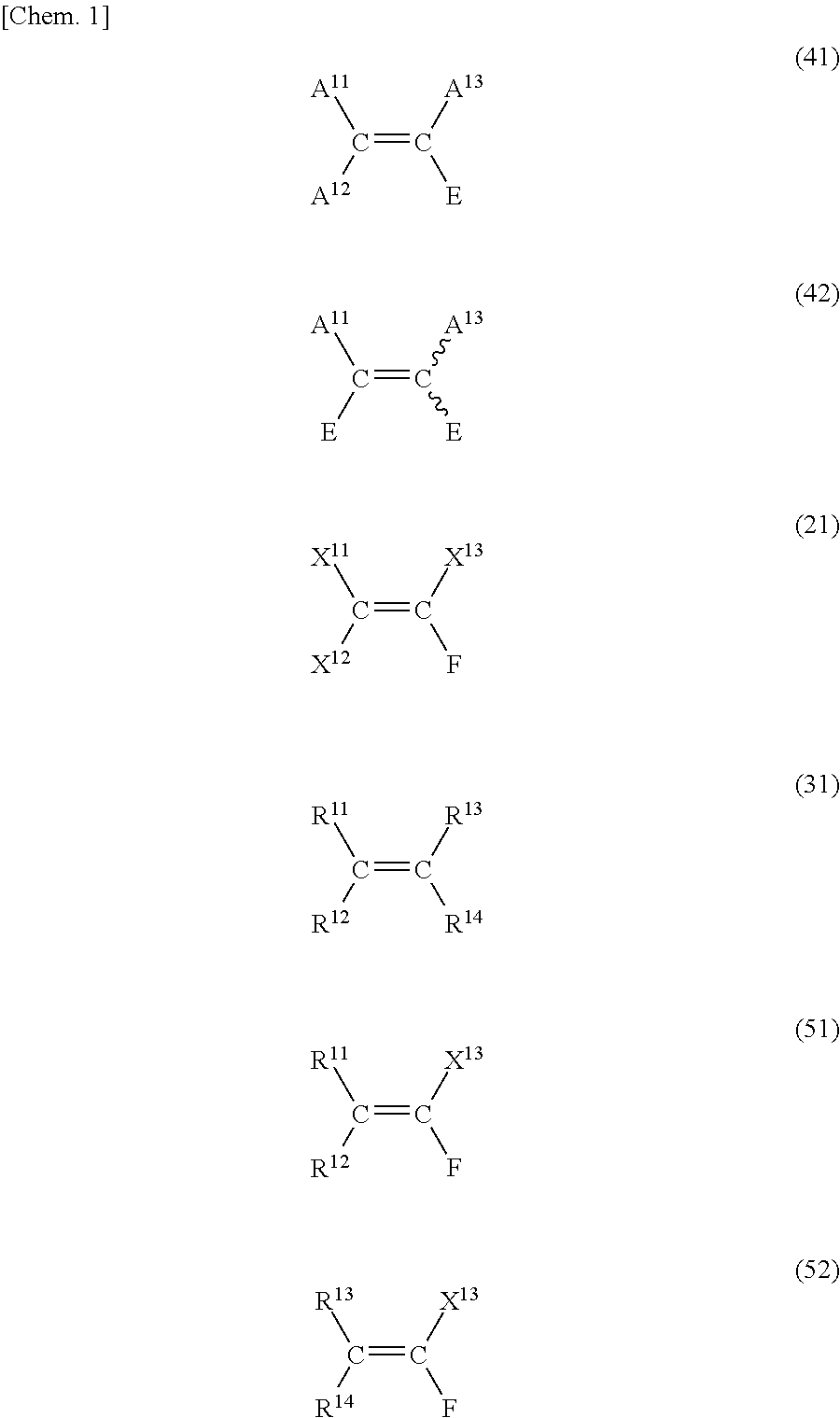Production method for fluorine-containing olefin compound
- Summary
- Abstract
- Description
- Claims
- Application Information
AI Technical Summary
Benefits of technology
Problems solved by technology
Method used
Image
Examples
example 1
[0162]Metathesis of propylene and tetrafluoroethylene with Grubbs' second-generation catalyst in the presence of ethyl vinyl ether.
[0163]In a nitrogen atmosphere, Grubbs' second-generation catalyst shown below (Grubbs 2nd, 20 mol %, 0.024 mmol), ethyl vinyl ether (20 mol %, 0.024 mmol), and benzene-d6 (0.6 mL) were weighed and put into a pressure proof NMR tube. Thereafter, the gas-phase part in the NMR tube was replaced with a propylene / tetrafluoroethylene=1 / 1 mixed gas (v / v, 1.0 atm, 2.7 mL, 0.12 mmol).
[0164]The NMR tube was heated at 60° C., and the reaction was conducted at that temperature for 1 hour. After completion of the reaction, NMR of the liquid content was measured to confirm the formation of 1,1-difluoro-1-propene.
[0165]The series of reactions is shown below.
example 2
[0166]Metathesis of styrene and tetrafluoroethylene with Grubbs' second-generation catalyst in the presence of ethyl vinyl ether.
[0167]In a nitrogen atmosphere, styrene (0.12 mmol), Grubbs' second-generation catalyst shown below (Grubbs 2nd, 20 mol %, 0.024 mmol), ethyl vinyl ether (20 mol %, 0.024 mmol), and o-dichlorobenzene-d4 (0.6 mL) are weighed and put into a pressure-proof NMR tube. Thereafter, the gas-phase part in the NMR tube is replaced with tetrafluoroethylene (1.0 atm, 2.7 mL, 0.12 mmol),
[0168]The NMR tube is heated at 180° C., and the reaction is conducted at that temperature for 1 hour. After completion of the reaction, NMR of the liquid content is measured to confirm the formation of β, β-difluorostyrene.
[0169]The series of reactions is shown below.
example 3
[0170]Metathesis of propylene and tetrafluoroethylene with Grubbs' second-generation catalyst in the presence of ethyl vinyl ether
[0171]In a nitrogen atmosphere, Grubbs' second-generation catalyst shown below (Grubbs 2nd, 20 mol %, 0.024 mmol), ethyl vinyl ether (20 mol %; 0.024 mmol), and benzene-d6 (0.6 mL) are weighed and put into a pressure-proof NMR tube. Thereafter, propylene (1.0 atm; 1.35 mL; 0.06 mmol) is put into the gas-phase part in the NMR tube. The NMR tube is heated at 60° C., and the reaction is conducted at that temperature for 1 hour. Thereafter, tetrafluoroethylene (1.0 atm, 1.35 mL, 0.06 mmol) is put into the gas-phase part in the NMR tube, and further the NMR tube is heated at 60° C. to conduct the reaction at that temperature for 1 hour. After completion of the reaction, NMR of the liquid content is measured to confirm the formation of 1,1-difluoro-1-propene.
[0172]The series of reactions is shown below.
PUM
| Property | Measurement | Unit |
|---|---|---|
| Temperature | aaaaa | aaaaa |
Abstract
Description
Claims
Application Information
 Login to View More
Login to View More - R&D
- Intellectual Property
- Life Sciences
- Materials
- Tech Scout
- Unparalleled Data Quality
- Higher Quality Content
- 60% Fewer Hallucinations
Browse by: Latest US Patents, China's latest patents, Technical Efficacy Thesaurus, Application Domain, Technology Topic, Popular Technical Reports.
© 2025 PatSnap. All rights reserved.Legal|Privacy policy|Modern Slavery Act Transparency Statement|Sitemap|About US| Contact US: help@patsnap.com



